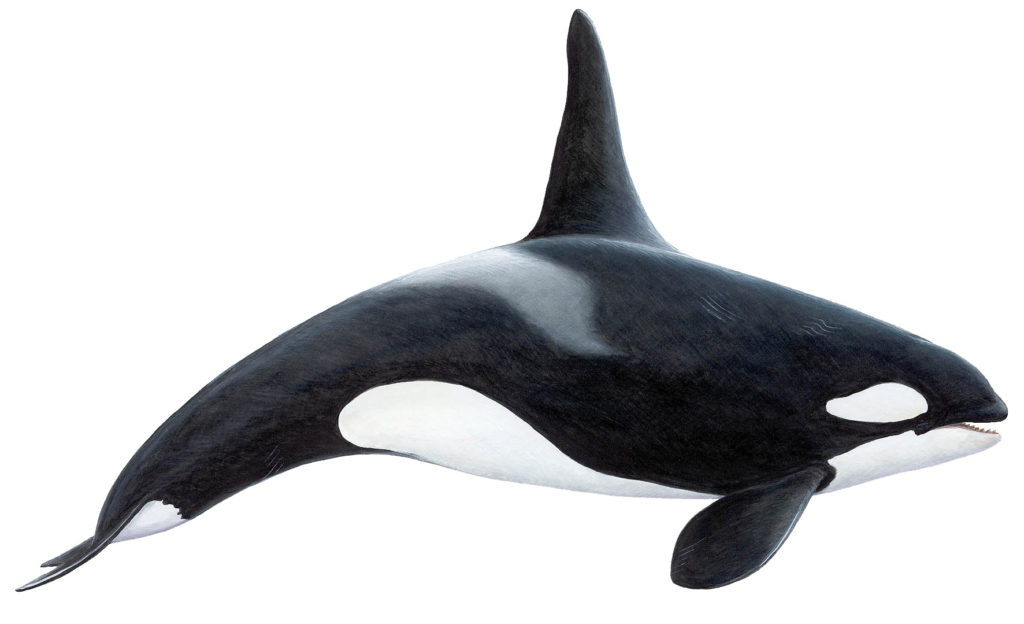
Killer Whale (Orca)
The Orca, also known as killer whale, is a member of the dolphin family and belongs to the toothed whales (Odontoceti) that form a suborder of cetaceans.
Orcas are easily identified by the tall dorsal fin, which can be up to 1,8 m tall, and the dominant black and white colour. The Orca is the fast swimmer, and can reach a speed of 50 km/h. It can remain submerged for up to 20 minutes, but usually surfaces in 5 minute periods. The breathing cycle is 3-4 consecutive times before diving.
The orca is family bound, staying together in groups, known as pods. These pods either consist of females and their offspring or bachelors. The males temporarly leave their pods during mating season.
The diet ranges from various fish species (e.g. herring, salmon) and squid to other marine mammels, like sea lions and smaller whale species or calves. Though according to scientists, the pod members will either specialize on fish (“resident pods”) or marine mammals (“transient pods”), to be able to co-exist.
The Iceland Orca population (resident pods) is believed to be around 5,000 individuals. They can be spotted anywhere in Iceland, but most frequently in the rich herring grounds off the East Fjords, and the South and West coasts of Iceland. In summertime, orcas tend to be close to shore, in inlets and bays, but preferring deeper waters during the winter months.
The Orca is probably one of the best studied whale species world-wide, which is not only the result of extensive research, but also the attention generated by captured Orcas in aquaria around the world. The most famous Orca is Keiko, the star of the Free Willy movies, returned home to Iceland in fall 1998, when he was brought to the Vestmannaeyjar Islands on a U.S. Air Force cargo plane. Keiko was set free a few years later but died close to Norway of a lung disease.
